Today, I revisit a story that I wrote back in 2019 when I was still an English teacher in Kyoto. Disgruntled by the ugly school buildings that defined my day-to-day work life, I wanted to get to the bottom of the question: Why do all Japanese public schools look the same?
I give a little backstory and read the script, which you can also follow along in full below (To see the photos, subscribe to the Local Japan email:
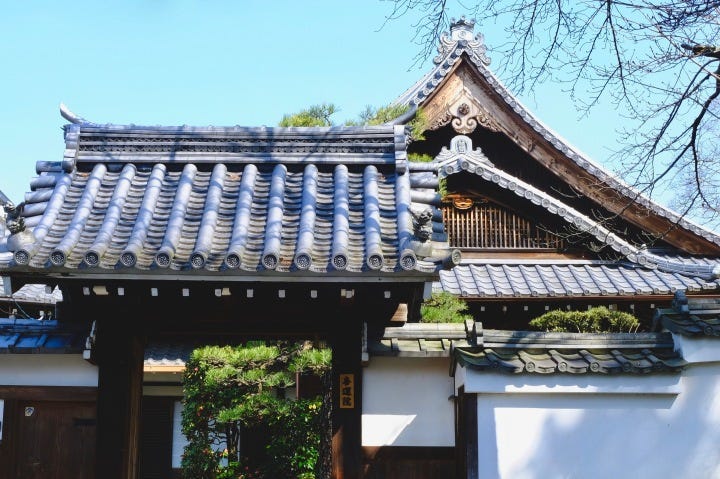
The click-clack of wooden sandals rings through the bamboo grove as an elder Buddhist monk leads me to the remains of a Meiji Era elementary school. The school building has been transported to this Buddhist temple from its original location three kilometers away.
“We now use the old lecture hall as a place of meditation,” the monk says. He turns to me, “Not many people know of this place.”
“I did some research,” I reply. “I heard that Chikkan Elementary is one of the only Meiji Era schools that still stands in Kyoto today.”
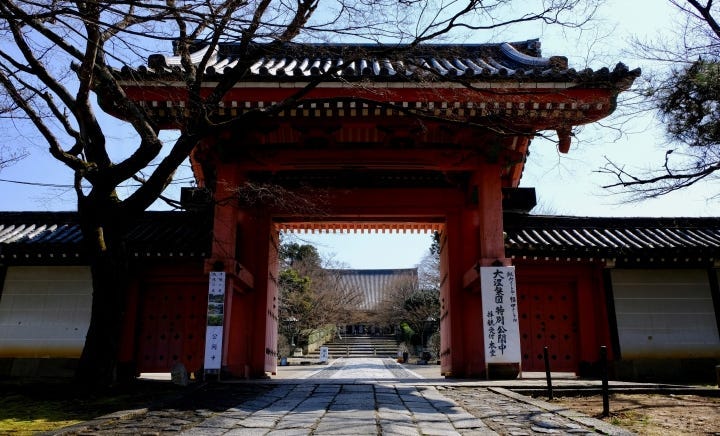
The clay-tiled roof and the wood craftsmanship come into view. Chikkan Elementary’s school emblem — 竹間 — flourishes the upper ridge of the structure. When I slide my hand across the wooden gateway, I think of the many Meiji Era (1868–1912) children who once walked beneath it.
As an English teacher who has been working in Kyoto for three years, I see students throughout the city commute to gray, modern buildings and study in concrete classrooms. During the course of my time in Kyoto, I have also visited the 959-year-old Ujigami Shrine and I have enjoyed the ancient music of Gion Festival. “Where — in this land of such deep history — did the schools of Kyoto go?” I think to myself.
“Chikkan Elementary was almost destroyed, but the monks had the building transferred here in 1929,” says the old man.
This temple in Kyoto, known as Shinnyo-do, is a private entity that managed to purchase and preserve such priceless works of historic architecture. Classic Japanese-tiled lecture halls and wooden entry gates once defined Japan’s schools. Nearly all of this workmanship has since disappeared, at the hands of a nationwide wave of demolishment during the Showa period (1926–1989).
“It’s beautiful,” I say to the monk as I snap a photo from my camera.
So many in our modern world thirst for beauty as they live in the concrete jungles. The Japanese also feel this dearth, but they have also been able to rely on their repositories of ancestral culture for an answer: Wandering the quiet stone pathways, I observe a young monk tediously rake the Zen rock garden. An elderly woman wearing garden boots cleans the fields of moss, picking up one maple leaf at a time. As I have experienced time and again, Japanese cities give me the opportunity to escape from their noise and rush — if only I look close enough.
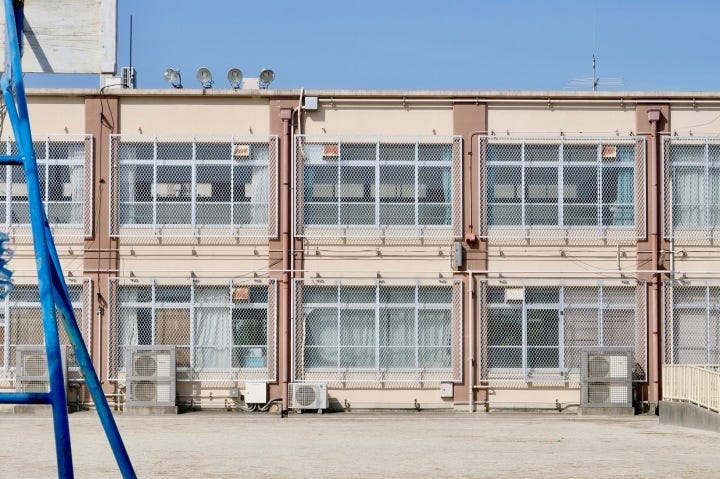
The schools of today, however, have blended in with the hubbub of urban life. They have shed away their clay roof tiles and wooden gateways. In the call by the centralized government of the early 1900s to prepare its people for militarization and factory work, elementary schools, junior high schools, and high schools in every ward of every city of every prefecture of Japan took on uniform shape.
Four-story gray cement blocks, exposing their off-white piping and random ventilation ducts protruding off the walls, shine their fluorescent lighting through rows of plastic windows. A single clock raised above the schoolyard ticks away with a watchful eye.
To learn more about why these buildings today look the way they do, I take a visit to the Kyoto Municipal Museum of School History. The museum is housed in a modern school building, but its entrance flaunts an antique gateway. Framed by two smooth pillars, this wooden structure is holding onto the way things once were.
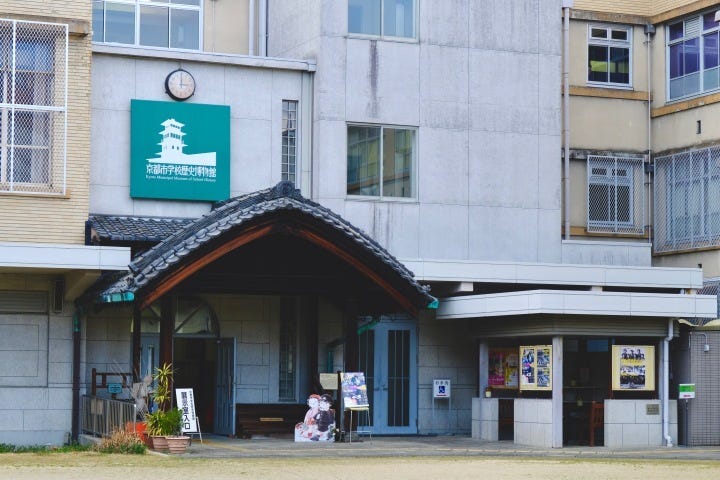
“School designs are made by a government agency,” a curator at the museum explains to me. “All plans are based on a general model.”
“When did this transition take place?” I ask.
“Japan started building these modern-style schools around the time of World War One,” he replies. “Government centralization became so prevalent everywhere by 1941 that every elementary school in Japan became public.”
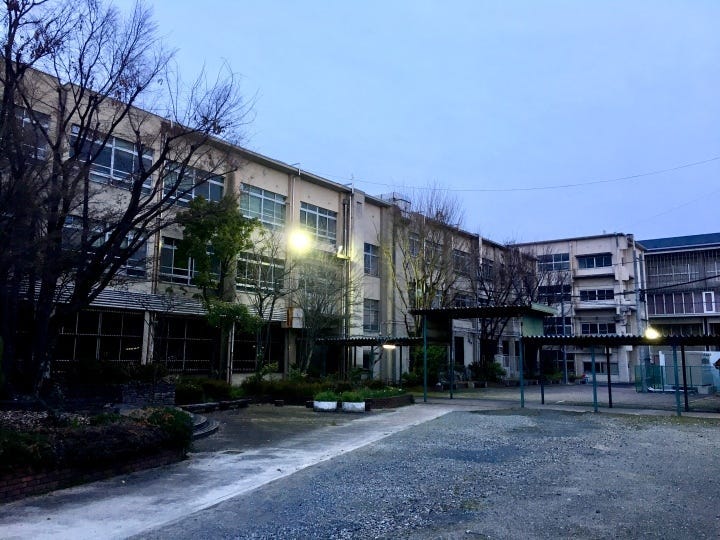
I immediately thought of the very elementary school that I teach at, which celebrated its centennial birthday in 2018. It was built in 1918 — just as the Empire of Japan was stepping onto the world stage.
“In fact, the government became so desperate by 1943 that they even took bronze statues from the schools and melted them to collect metal for the war effort,” the curator adds.
The museum displays a rare bronze statue of Masashige Kusunoki, a famous 14th-century samurai, charging to battle on his horse. It is one of the few that survive.
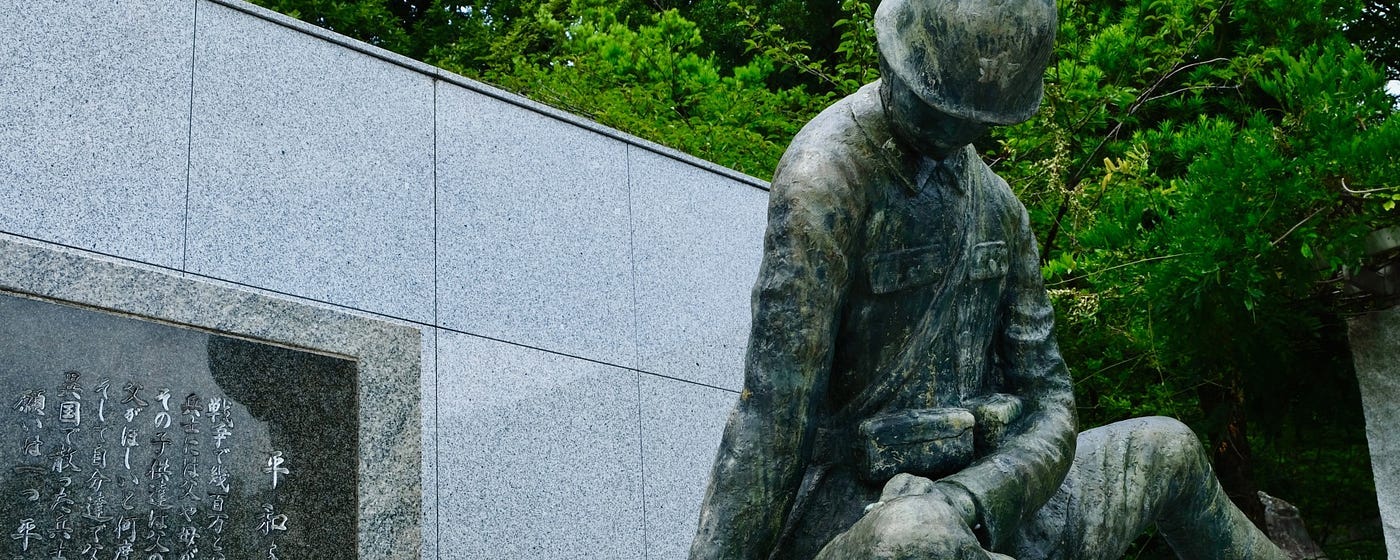
The tragic melting of statues on behalf of the war machine seems a fitting image to describe the demolition of historic architecture for the sake of economic output. Like in the United States, Japanese school clocks ring in 50-minute intervals. Neat rows of chairs face blackboards in the name of “practicality” so that students retain in their heads the fact that a²+b²=c² and in 1492 Christopher Columbus sailed the ocean blue.
Passing below the wooden gateway, I exit the museum and make my way back onto the city streets. Returning to my apartment, I decide to head to my roof to catch a view of Kyoto’s cityscape. As I clutch the roof railing, I gaze forward to the high-rise next door. Through windows, I see office workers penning paper, typing on keyboards, and generating vitamin D from computer screens.
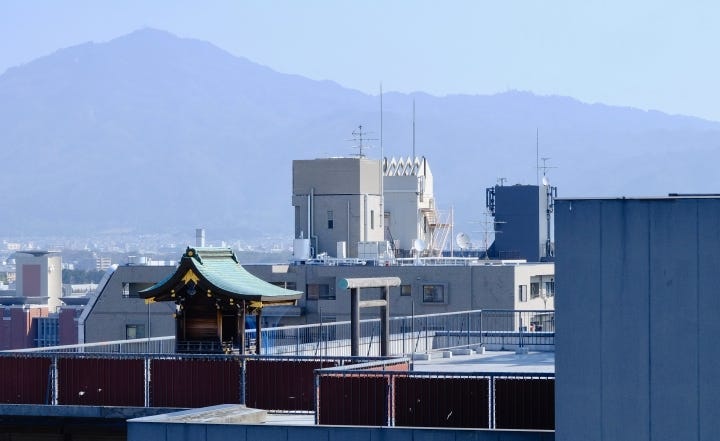
My eyes move up the walls to the roof. There stands a small, wooden Shinto shrine. Throughout the year, it bakes in the summer heat, tastes the autumn rain, freezes in the winter chill, and smells the spring breeze. A salaryman has made his way to the roof for a smoke break and some sunlight. He takes one last drag and puts the cigarette out. His necktie swaying with the wind, he claps his hands and gives a bow before the shrine.
In the dense cities of our modern world, beauty hangs on quietly in the small things.
Links to Resources:
Please subscribe to the Local Japan Substack as a free or paid member starting at just $5 a month! Your contributions help me with production costs and the time required to record and edit podcasts and organize interviews. For this, I thank you always.









#42 Why All Japanese Public Schools Look the Same